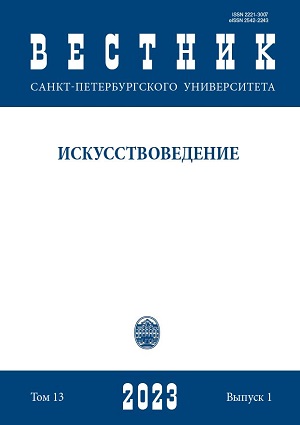Performing Ornaments in English Harpsichord Music. Part III
DOI:
https://doi.org/10.21638/spbu15.2023.104Аннотация
The closer the study of the problems of executing ornaments in England comes to the eighteenth century, the more various scientific materials become available and the more connections are found with the continental countries of Europe. Among the many publications, it was necessary to refer to a large number of instructions books designed for learning to play various instruments, including the harpsichord, such as “The Harpsichord Master”, Playford’s publications of “An Introduction to the Skill of Music” (issued during 1694 and 1730), “The delightful companion, or, Choice new lessons for the recorder or flute” (published by Robert Carr), “The Compleat Tutor to the Hautboy; or the Art of Playing on that Instrument” (published by J. Walsh) and many other. Along with this, the number of publications devoted to the study of this period is constantly increasing in the 20th and 21st centuries. In this article, a task is undertaken devoted, on the one hand, to a comprehensive consideration of the mentioned materials, on the other hand, a critical assessment is devoted to their later scientific study. As a “starting” point the “Short, easy, & plain rules” of Cap. Prendcourt (c1700) supplied with an ornamentation table are taken. The realizations of ornaments from Prendcourt are studied in the context of English, French and German sources of that period. It is namely this angle of study which forced the authors to resort to scrupulous and detailed consideration of the many subtleties associated with the execution of various ornaments.
Ключевые слова:
shake, tremblement, tremblement simple, tremblement détaché, tremblement appuyé, coulé, back-fall, fore-fall, plain note & shake, appoggiatura, doppelt-cadence, mordant, Vorschlag, Nachschlag
Скачивания
Библиографические ссылки
Загрузки
Опубликован
Как цитировать
Выпуск
Раздел
Лицензия
Статьи журнала «Вестник Санкт-Петербургского университета. Искусствоведение» находятся в открытом доступе и распространяются в соответствии с условиями Лицензионного Договора с Санкт-Петербургским государственным университетом, который бесплатно предоставляет авторам неограниченное распространение и самостоятельное архивирование.







